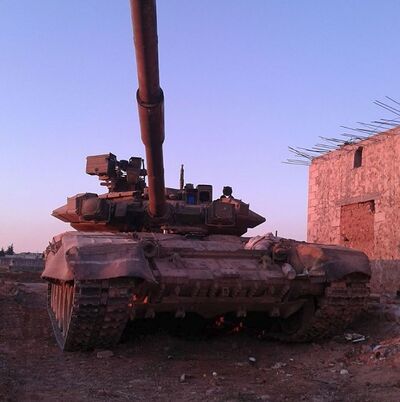Operation Harpe
Operation Harpe was the Syaran Commonality Armed Forces plan for a major strategic offensive in northern Ruvelka from 16 May to 8 July 2009 during the Zemplen War. It was carried out by the forces of Army Group Alpha under the command of Field Marshal Nikodemos Cvetkov against the Imperial Armed Forces of Ruvelka of Army Group North under Vice Field Marshal Péter Novák. Syaran efforts were aided by forces from Æþurheim, while Ruvelka was assisted by forces from Acrea.
Operation Harpe was part of the Syaran Spring Offensives which aimed to force Ruvelka to commit to a series of pitched battles and operations that would destroy much of the front line strength of the Imperial Army and Air Force, paving the way for a Syaran strategic victory by the end of 2009 through relentless pressure placed on the Ruvelkan military. Although intended to be launched in coordination with one another, the logistical demands of three simultaneous strategic offensives were too much for the Syaran military to sustain, forcing Syaran Central Command to stage the offensives in sequence, with Operation Harpe the last to be commenced. Unlike Syaran efforts in the south and center, Field Marshal Cvetkov eschewed a major pincer movement to encircle Army Group North, which he believed beyond the ability of Army Group Alpha. Instead Syara forces concentrated on rupturing Ruvelkan defenses between the cities of Kaposvár and Kunhegyes, then proceeding directly east towards the port city of Mátészalka. Capture of Mátészalka would have cut off Ruvelka from Acrean support and supplies of fuel and material, while also placing the Syarans in position to circumnavigate the Kurilla Mountains and strike into the largely undefended eastern Ruvelka.
The Syarans commenced the offensive on 16 May with 1,250,000 troops and more than 10,000 armored fighting vehicles and succeeded in breaking through Ruvelkan lines, spearheaded by Colonel General Simeon Karandzhulovs' 7th Army. With Ruvelkan forces near Kaposvár and Kunhegyes pinned in place by Syaran assaults, Army Group North quickly began to give ground in the face of the Syaran onslaught; efforts by the Acrean 6th Army to stymie the Syaran advance failed to prevent the loss of Kuraktava and by by the end of May the Ruvelkan position neared catastrophe. Faced with a collapsing front line, Novák ordered what reserves were available to mass at Soltvadkert after deceiving the Syarans into believing the city was lightly defended. The ensuing Battle of Soltvadkert ended in a decisive Ruvelkan victory, causing Cvetkov to order 7th Army to fall back and assist in the capture of Kaposvár and Kunhegyes. Ruvelkan and Acrean attempts to cut off 7th Army failed, leading to the recapture of Kuraktava but the surrender of both Kaposvár and Kunhegyes.
Syaran forces fell short of their goal of capturing Mátészalka. The loss of the historic and cultural cities of Kaposvár and Kunhegyes were a blow to Ruvelkan morale, and a major cause for the commencement of Operation Eclipse. Ruvelkan forces recaptured Sepina during Operation Overshadow, while the front line across the Koryal Plain remained largely static elsewhere throughout the Ruvelkan Autumn Counter-Offensive.
